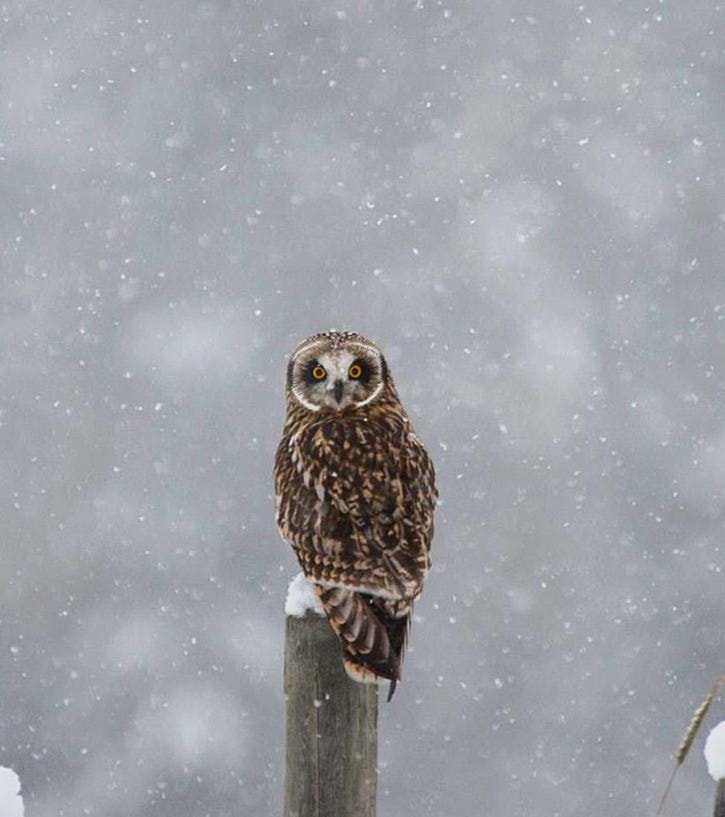Last week I was driving through Crescent Bay and saw a bird cruising low over a snow-covered field. My immediate reaction, based on the behaviour was Northern Harrier. This is a fairly large, slender hawk with long pointed wings. It flies low over fields as it hunts using occasional flaps and long glides. But the bird I was looking at was flapping much too much with deep floppy wing beats. As soon as I saw that, I knew I was looking at a Short-eared Owl.
This is an uncommon bird in our area. They breed in grassland or marshy areas, something we have very little of. There are no breeding records at all for the Nakusp region. They do pass through here on migration sometimes, but only once every few years. Since 1980, I have known them to visit the area just six times. Some of these birds have remained for several weeks; others were seen just one day.
The day after this sighting, I returned to Crescent Bay to see if was still around. I did not relocate it there, but coming home through Brouse I found two of them sitting on fence posts!
Migration normally occurs much earlier than this, so this bird is not casually moving through on its way to its normal wintering ground. It was probably living comfortably up the valley somewhere (there is a lot of good habitat in the Revelstoke area), and was pushed along by the recent snows.
Not all migratory species have predetermined routes and schedules; some seem to go only as far and as fast as conditions dictate. I hope these two continue on further south fairly quickly. I was quite pleased to see the Crescent Bay bird catch and eat a good sized vole while I was watching, but if the snow gets much deeper, detecting prey will become much more difficult.
Also last week I saw a Northern Pygmy-Owl in Nakusp. This tiny little predator is much more common here and we regularly have a few around the region in winter. During summer they go up the mountains somewhat and live at higher elevations.
In October, there were two Blue Jays in town. These visitors from the east are a much paler blue than the familiar Steller’s Jay, and they also have extensive white on their undersides. I saw them on and off for a few weeks but then didn’t see them for quite a while.
Last week I again heard one calling in town. In discussion with a couple of residents who maintain feeders, I learned that these jays have apparently been here all along. They are not nearly as loud and obvious as our Steller’s Jays and prefer to stay hidden in the trees when not feeding. Originally, this species was found only east of the Rocky Mountains, but in recent times they have become much more regular in the west. They are now breeding in places such as Cranbrook, Creston and Castlegar.
